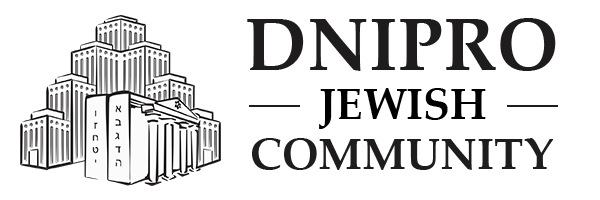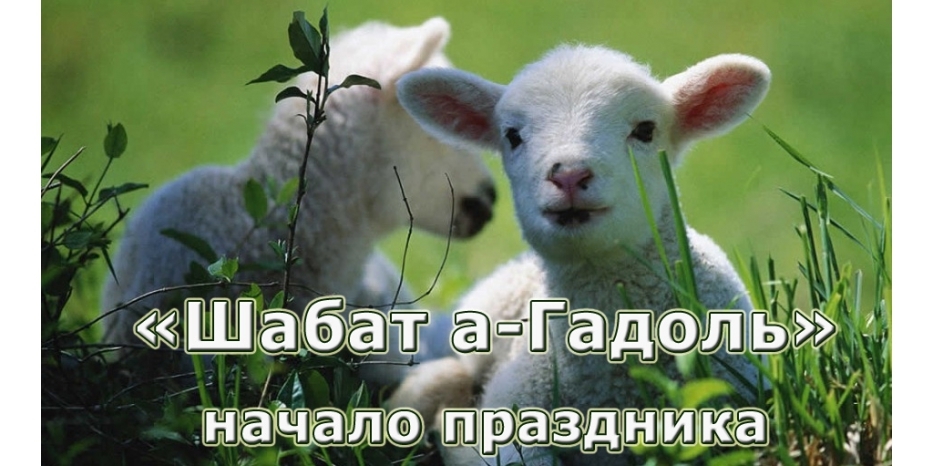The Sabbath that begins this evening holds a special place in Jewish tradition – it is called the “Great” or, in Hebrew, “Shabbat a-Gadol.” This particular Sabbath marks the start of the festive period of Liberation, the Exodus from slavery.
The first “Great Sabbath” occurred a few days before the Exodus of the Jews from Egypt. That year, it fell on the 7th of Nisan. At the beginning of the month of Nisan, the Almighty commanded the Jews: “On the tenth day of this month, let each man take for himself a lamb according to the house of his father… And it shall be for you to keep until the fourteenth day of this month, and then the whole congregation of Israel shall kill it” (Shemot, 12).
Here is what is said in the book “Sefer ha-Pardes,” which, according to tradition, was written by the great Rashi (Rabbi Shlomo Yitzhaki): “On this day, the tenth of Nisan, on the Sabbath that preceded the liberation, the Jews chose for themselves a lamb for the Passover sacrifice. They said to themselves, ‘Behold, we will bring as a sacrifice an idol to which the Egyptians bow down, and they will not dare to prevent us.’ The Almighty said to them, ‘You will see the miracle that I will perform for you. Each of you should choose a lamb and keep it until the fourteenth of Nisan.'”
When the Egyptians saw what the Jews were doing, they tried to take revenge for their idol, but they were immediately struck by severe illnesses, writhing in pain and unable to harm the Jews. Since on this day the Almighty performed a miracle for Israel, the Sabbath before Passover was called the Great Sabbath. Thus taught Rabbi Avraham, may his memory be a blessing.
This commandment – to prepare the lamb four days before its sacrifice – was given only for the year of the Exodus from Egypt and does not apply to subsequent generations.
In honor of this miracle, the Sabbath is called Shabbat a-Gadol. But why did this Sabbath become a day of remembrance? Because if it had not been a Sabbath, the Egyptians would not have paid attention to the actions of the Jews. However, since they knew that on the Sabbath the Jews do not tend to animals, they were surprised and asked, “Why do you need lambs?” The Jews found themselves in danger, and then the Almighty granted them salvation.
This year, the eve of Passover falls at the end of the Sabbath. Here is the schedule for Shabbat a-Gadol – the Sabbath preceding Passover – with the time indicated for Dnipro:
The final time for the consumption of chametz is Saturday at 10:41.
The final time for the destruction of chametz is Saturday at 11:50.
Shaharit
This Shabbat, the Shacharit prayer is recited early to ensure that one can return home and have the Shabbat meal with chametz before the time when the consumption of chametz becomes prohibited.
The daytime Shabbat meal
The meal should take place according to all the rules mentioned earlier. Here are a few important details to keep in mind:
The first part of the meal – the Kiddush and the consumption of chametz – must be completed by 10:41, as after this time, chametz becomes prohibited.
If the meal uses siddurs that are used throughout the year, they should be put away after the meal in a location where all items that have been “sold” for Passover are stored. This helps to ensure that any chametz-related items are kept separate during the holiday.
Crumbs of chametz from the table or floor should be flushed down the toilet.
The broom and dustpan used to clean up the chametz should also be placed in the location where the “sold” items are stored.
Destruction of chametz must be completed by 11:50.
Attention! The entire family – men, women, and children – must annul the chametz by reciting the second text “All leaven” (siddur, p. 406). Usually, we read it during the burning of the chametz, but this year it will be done separately, as the chametz has already been in use. All of this should be completed by 11:50. From this moment on, it is prohibited to derive any benefit from chametz. It’s advisable to finish earlier, so that, God forbid, there is no delay.
What else is forbidden to do this Saturday?
It is prohibited to prepare from Shabbat to Yom Tov, so one cannot set the table in advance, arrange matzah or wine – preparation for the Seder is only allowed after the onset of Yom Tov, as will be explained below.
During the day of Shabbat and until the moment of consuming “korech” (the sandwich of matzah and bitter herbs) during the second Passover Seder, it is customary not to eat foods that are part of the charoset (pear, apple, nuts) and maror (lettuce, horseradish).
Shabbat prayer Mincha
Minkha is prayed earlier than usual. After the prayer, a passage from the Haggadah is read, from the words “We were slaves in Egypt” to “…to atone for all our sins” (siddur, p. 398). Then, the “Order of the Pesach Offering” is read (siddur, p. 407).
The third meal
After Minkha, one can have a meal – for example, with cholent, meat, fish, fruits, or vegetables – to fulfill the obligation of the third Shabbat meal. However, it is advisable not to overeat so that one can enjoy the matzah in the evening with appetite.
End of Sabbath – First Evening of Passover
Immediately after the conclusion of Shabbat, the Maariv prayer is recited to begin the Passover Seder as soon as possible. After the onset of Yom Tov at 20:06, the phrase “Blessed is He who separates the holy from the holy” is recited, and only then do preparations for the Seder begin.
Lighting of holiday candles
Candles are lit immediately after the onset of Yom Tov to avoid delaying the preparations for the Seder.
The order of Kiddush and Avdalah on the first evening of Pesach
When Passover coincides with the conclusion of Shabbat, the Kiddish is combined with the Havdalah. Therefore, it is important to carefully read all the instructions and review the order of Kiddish in the siddur before beginning.
The blessing on “basamim” is not recited. During the blessing on the fire, there is no need to hold the candle up to the nails; it is sufficient to simply look at the flame.
May Shabbat HaGadol truly bring light, inspiration, and spiritual preparation for Pesach, the holiday of our liberation. It is a time for reflection, connection with loved ones, and preparation for the celebration of freedom and unity.




